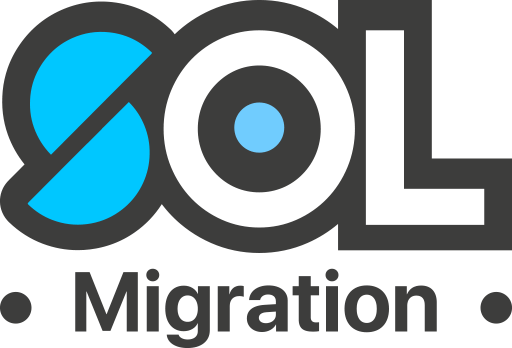Introduction
Immigrating to a new country is a significant decision that involves considering various factors, from the ease of obtaining a visa to the quality of life and job opportunities. Two popular destinations for immigrants are Canada and Australia, both known for their high standards of living, diverse cultures, and strong economies. But which one is better for immigrants? This article will compare the two countries based on several key factors to help potential immigrants make an informed decision.

1. Immigration Policies and Procedures
Canada
Canada is known for its friendly immigration policies, with various programs like the Express Entry system, the Provincial Nominee Program, and family sponsorship. These programs are designed to attract skilled workers, entrepreneurs, and family members of Canadian residents and citizens. The country sets high immigration targets each year, reflecting its openness to new residents.
Australia
Australia also has a points-based immigration system (e.g., General Skilled Visas, State Sponsored Visa), similar to Canada’s Express Entry. It assesses candidates based on factors such as age, language proficiency, work experience, and education. The country offers several visa categories, including skilled worker visas, family reunion visas, and business innovation visas. However, Australia’s immigration policies are considered slightly stricter than Canada’s, with a more rigorous application process and selection criteria.

2. Job Opportunities
Canada
Canada boasts a stable economy with numerous job opportunities, especially in sectors like technology, healthcare, financial services and engineering. In 2023, there were 150,697 job postings in Canada according to the Job Bank website (https://www.jobbank.gc.ca/home), showcasing a variety of opportunities across different sectors. Additionally, as of January 2024, the total employment in Canada was reported to be 20,362,000, reflecting a monthly increase of 0.2%. These figures indicate a dynamic job market with various opportunities for job seekers in Canada.
The country’s minimum wage is also favourable, making it an attractive destination for workers. The federal minimum wage in Canada was increased to $16.65 per hour on April 1, 2023, and the average household income in Canada for 2023 is reported to be $75,452 per year (https://www.insurdinary.ca/average-household-income-in-canada/)
Australia
Australia’s economy is also strong, particularly in mining, agriculture, and education sectors. The country has a high minimum wage and offers excellent job opportunities, particularly for skilled workers. As of 1 July 2023, the national minimum wage in Australia is $23.23 per hour, which equates to $882.80 per week, based on a 38-hour work week (https://www.fwc.gov.au/agreements-awards/minimum-wages-and-conditions/national-minimum-wage). Regarding the average weekly earnings of Australian residents, according to the Australian Bureau of Statistics (https://www.abs.gov.au/statistics/labour/earnings-and-working-conditions/employee-earnings/latest-release#key-statistics), as of August 2023, the median weekly earnings for Australian employees was $1,300.

3. Health Care
Canada
Canada’s health care system, often referred to as Medicare, is a publicly funded system that provides coverage to all Canadian citizens and permanent residents. This means that if you are Canadian citizenship or Permanent Residents, then you will have access to medically necessary hospital and physician services without out-of-pocket expenses. These services are funded by taxes.
However, the health care system does not cover all services. For example, prescription drugs outside hospitals, dental care, and vision care are not universally covered and might require private insurance or out-of-pocket payment, particularly for services that are not deemed medically necessary.
Australia
Similar to Canada, medical services in Australia are not entirely free, but many are substantially covered under the Medicare system. This means that Medicare provides Australian residents with access to free or subsidized health services. These services include treatment and accommodation in public hospitals and partial or full coverage for specialist visits, with a referral from a doctor.
However, there are certain services and items that Medicare does not cover, such as most dental care, glasses, contact lenses, hearing aids, and cosmetic surgery. These are typically covered by private health insurance or out-of-pocket payments. Additionally, while Medicare covers a portion of costs for many medical services and treatments, there may still be some expenses that the patient needs to pay, especially if the healthcare provider charges more than the Medicare benefit.

4. Education
Canada
In Canada, schooling is generally free for Canadian residents up to the end of high school, which varies between the 11th or 12th grade. This public education is funded by municipal, provincial, and federal governments. However, university education is not free; Canadian citizens and permanent residents pay tuition fees, which are subsidized but still require out-of-pocket contribution. For the 2022-2023 academic year, the average annual tuition fee for Canadian undergraduate students was about CAD 6,000 to CAD 8,000.
The childcare system is Canada is not free. The childcare fees vary by province and the age of the child. In 2023, the average amount parents paid for their main full-time childcare arrangement is $544 per month. However, Canadian governments are working hard, aiming to provide Canadian parents with $10-a-day regulated child care spaces for children under six years old.
Australia
In Australia, the childcare fees are higher than those in Canada. On average, the daily rate is about $119. However, the cost of childcare in Australia in 2023 varies depending on the type of care, location, and the number of days your child attends.
- Long day care (childcare centres) can range from $70 to $188 per day.
- Pre-school costs can range from $45 to $80 per day.
- Family day care typically charges between $7.50 to $16.80 per hour depending on location and service.
Remember, these costs are before any subsidies. The Australian government offers a Child Care Subsidy that can significantly reduce the amount you pay, depending on your family income, activity level, and other factors. Most families are eligible for some level of subsidy, which is paid directly to the service to reduce your out-of-pocket costs.
Regarding the schooling system, Australia provides free schooling for all children of Australian citizen and permanent residents. However, higher education is not free. For the 2022-2023 academic year, the student contribution amounts ranged from approximately AUD 3,950 to AUD 14,500 per year. These bands are subject to change and can vary based on the discipline of study.

5. Quality of Life
Canada
Canada is known for its high quality of life, with access to excellent healthcare, education, and social services. The country boasts beautiful landscapes, a clean environment, and a high level of safety. Canadian cities consistently rank high in global liveability indexes.
Australia
Similarly, Australia offers an outstanding quality of life, with world-class healthcare, education systems, and a strong focus on work-life balance. Australia’s climate, beautiful beaches, and outdoor lifestyle make it an attractive place to live. Sydney, Melbourne and Brisbane are often on the top of the most liveable cities all over the world.

6. Cultural Diversity and Integration
Both Australia and Canada are highly multicultural and promotes inclusivity and diversity. The countries have official policies on multiculturalism and offers various programs to help immigrants integrate into society. Canadian cities like Toronto and Vancouver are known for their multicultural communities. Australian cities like Sydney and Melbourne are also culturally diverse and welcoming to newcomers.

7. Cost of Living
Canada
The cost of living in Canada can vary significantly depending on the region. Cities like Vancouver and Toronto are known for their high cost of living, whereas other areas are more affordable. Housing can be expensive, but healthcare is publicly funded, which reduces overall living costs. A family of four in Canada can expect to spend about CAD 5,193.3 per month excluding rent. A single person’s estimated monthly costs are around CAD 1,448.6 excluding rent (https://www.numbeo.com/cost-of-living/country_result.jsp?country=Canada)
Australia
Australia’s cost of living is also high, especially in major cities like Sydney and Melbourne. However, like Canada, healthcare is subsidized, and the country offers a high standard of living. The cost of living can be balanced by the country’s higher average salaries. A family of four’s estimated monthly costs, excluding rent, are around AUD 6,092. A single person’s estimated monthly costs, excluding rent, are around AUD 1,727.5 (https://www.numbeo.com/cost-of-living/country_result.jsp?country=Australia)
Conclusion
Choosing between Canada and Australia for immigration depends on individual preferences and priorities. Both countries offer excellent opportunities and high standards of living. Canada might be the better choice for those who prefer a more inclusive immigration policy and multicultural environment. In contrast, Australia could be ideal for those seeking a warmer climate and outdoor lifestyle.
Ultimately, the decision should be based on careful consideration of each country’s immigration policies, job markets, quality of life, and personal circumstances. Prospective immigrants may also consider consulting with immigration experts or those who have already made the move to gain deeper insights into each country’s living experience.
Need help with migration and visa services? Contact our experienced migration agents on 07 3003 1899 or hello@solmigration.com!


